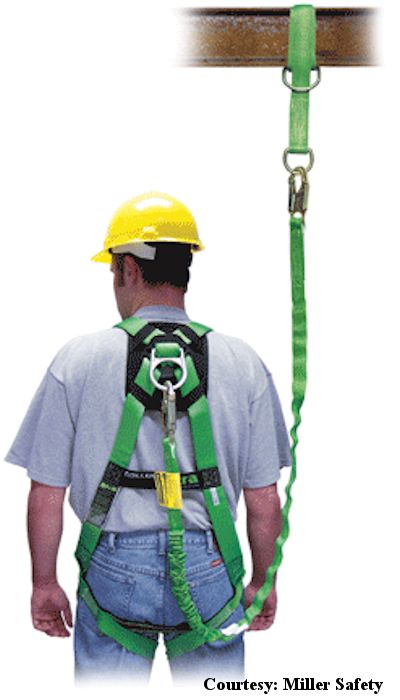Personal Fall-Arrest Systems (PFAS)
A personal fall-arrest system consists of an anchorage, connectors, and a full-body harness that work together to stop a fall and to minimize the arrest force.
A personal fall-arrest system consists of an anchorage, connectors, and a full-body harness that work together.
Other parts of the system may include a lanyard, a deceleration device, and a lifeline.
- Ensure that personal fall arrest systems will, when stopping a fall:
- Limit maximum arresting force to 1,800 pounds.
- Be rigged such that an employee can neither free-fall more than 6 feet nor contact any lower level.
- Bring an employee to a complete stop and limit maximum deceleration distance to 3½ feet.
- Have sufficient strength to withstand twice the potential impact energy of a worker free falling a distance of 6 feet, or the free fall distance permitted by the system, whichever is less.
- Remove systems and components from service immediately if they have been subjected to fall impact, until inspected by a competent person and deemed undamaged and suitable for use.
- Promptly rescue employees in the event of a fall, or assure that they are able to rescue themselves.
- Inspect systems before each use for wear, damage, and other deterioration, and remove defective components from service.
- Do not attach fall arrest systems to guardrail systems or hoists.
- Rig fall arrest systems to allow movement of the worker only as far as the edge of the walking/working surface, when used at hoist areas.
Knowledge Check Choose the best answer for the question.
5-3. Workers wearing a personal fall-arrest system should be rigged so that an employee _____.
You forgot to answer the question!

